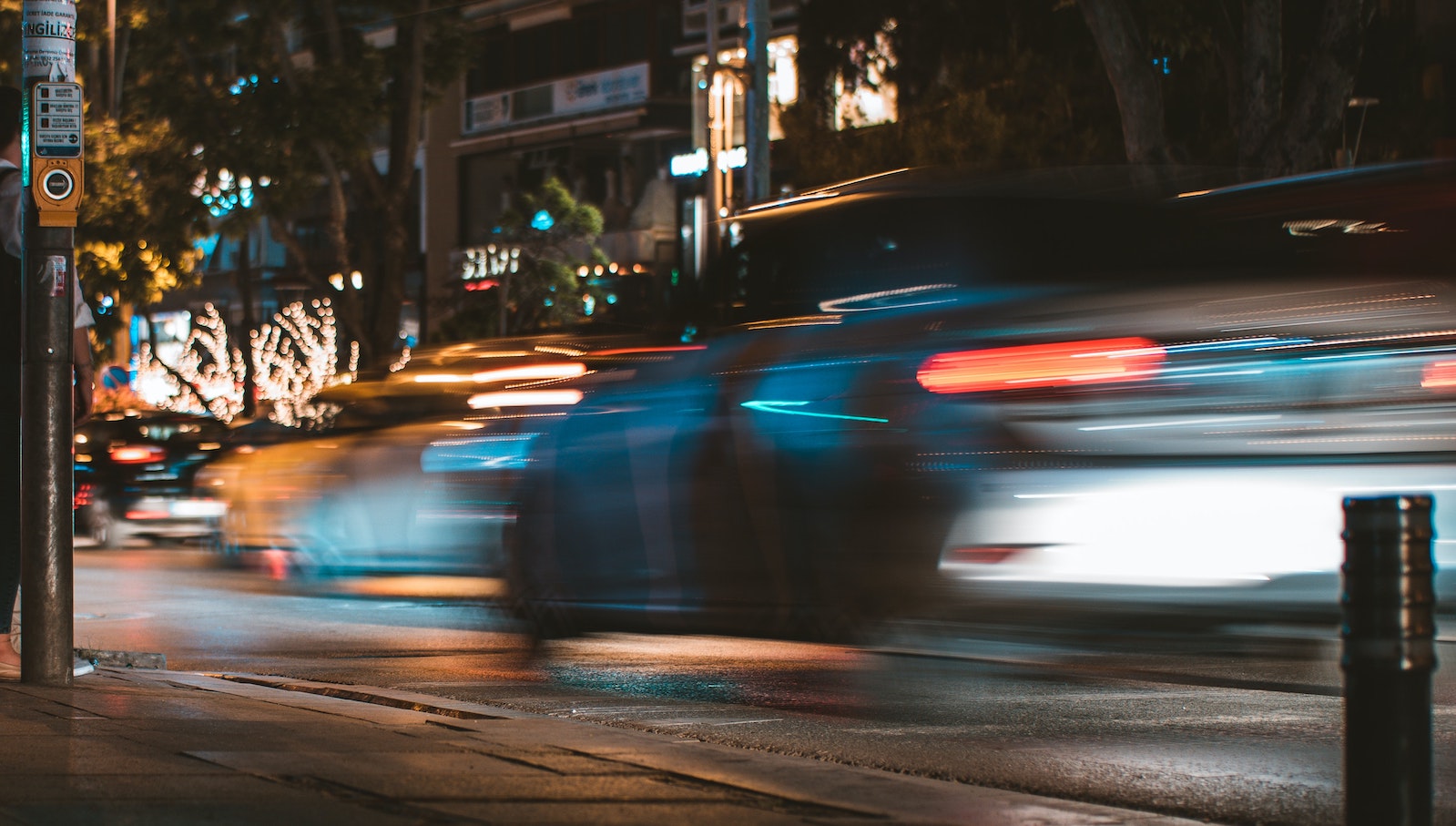KEY TAKEAWAYS:
--In the last five years, calibrations during repairs for auto collisions have moved from the exception to almost the rule. Technology exists to ensure necessary calibrations are completed 100% of the time and are recorded for all relevant parties, to instill confidence in the repair.
--The wave we are witnessing with scanning is now seeing initial liftoff with calibrations. A more systematic look at the best way for each facility to execute and manage calibrations is needed to improve the customer experience, particularly with regard to quality and cycle time.
----------
Advanced Driver Assistance Systems (ADAS) have become an established feature in late-model vehicles, composed of an integrated suite of sensors, cameras, radars and more. Some of the earliest versions of ADAS appeared in the early 2000s with various forms of night vision, cruise control and lane departure warning systems.
The National Highway Traffic Safety Administration (NHTSA) led two major ADAS initiatives in the 2010s – the first, in 2014, required all new vehicles with a gross weight at or less than 10,000 pounds to include “rear visibility technology” by May 2018. This was followed in 2019 by the voluntary commitment by 20 automakers to equip all new vehicles with automatic emergency braking (AEB) by September 2022.
As the list of now-standard safety systems only continues to grow, it is complemented by a bevy of systems designed for the sole purpose of improving safety. (Figure 1)
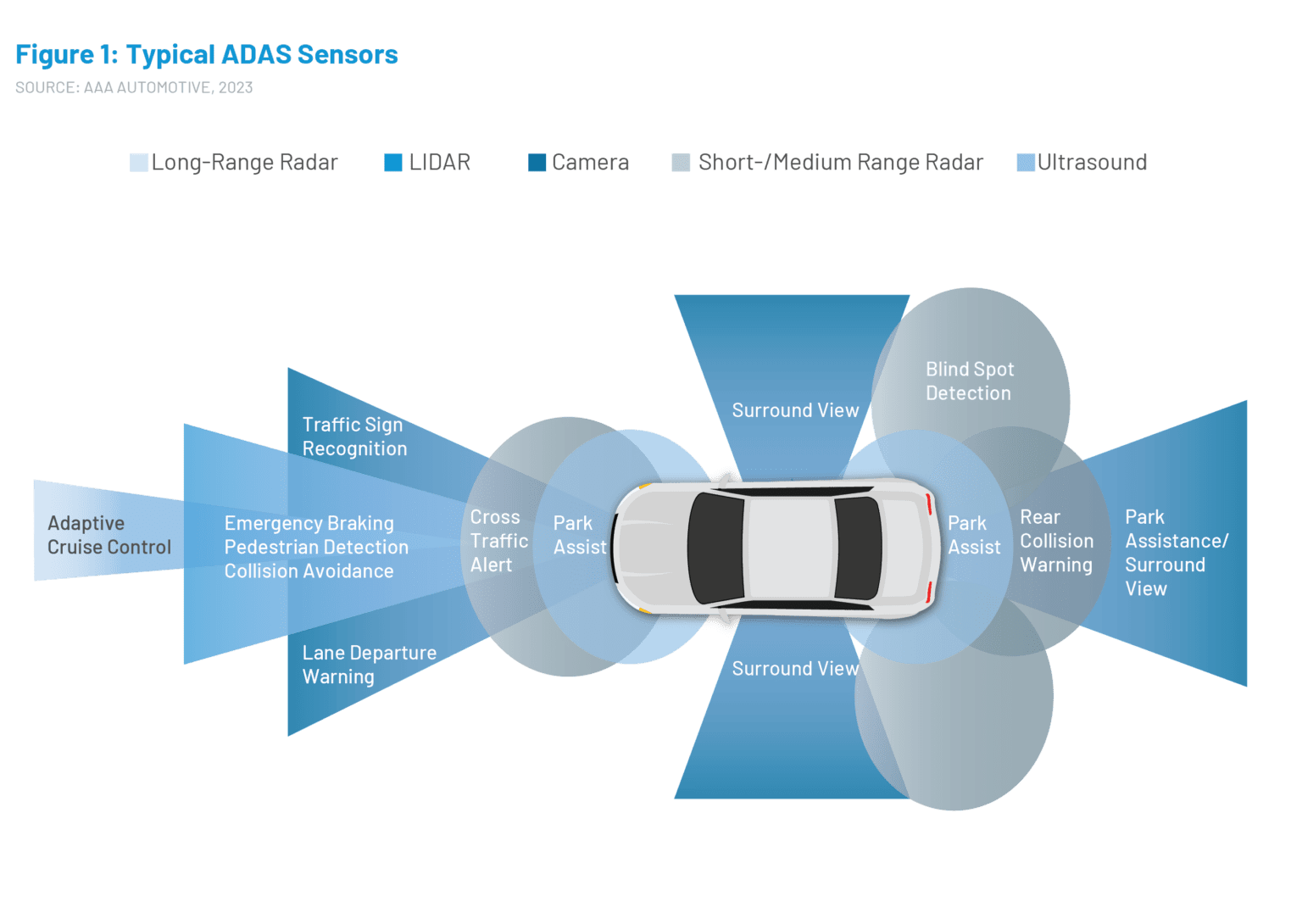
Of course, as collisions continue to occur with great frequency, these systems must not only be repaired or replaced when damaged but also calibrated to ensure proper functionality before the vehicle returns to the road. ADAS adoption may have ramped up in a relatively short time, and corresponding collision repair needs may be a steeper ramp due, in part, to the sheer complexity of these new systems.
The Prevalence of Scans
Diagnostic scan procedures are becoming more frequent as part of the collision repair process. This is especially true for late-model vehicles that are more likely to come standard-equipped with ADAS technology and other safety features. Each quarter, the percentage of claims where at least one diagnostic scan is completed steadily rises. Only 3.3% of claims included a scan procedure in Q1 2017. By Q4 2022, 57% of claims included a scan, with vehicles less than four years old being scanned 65% of the time. (Figure 2)
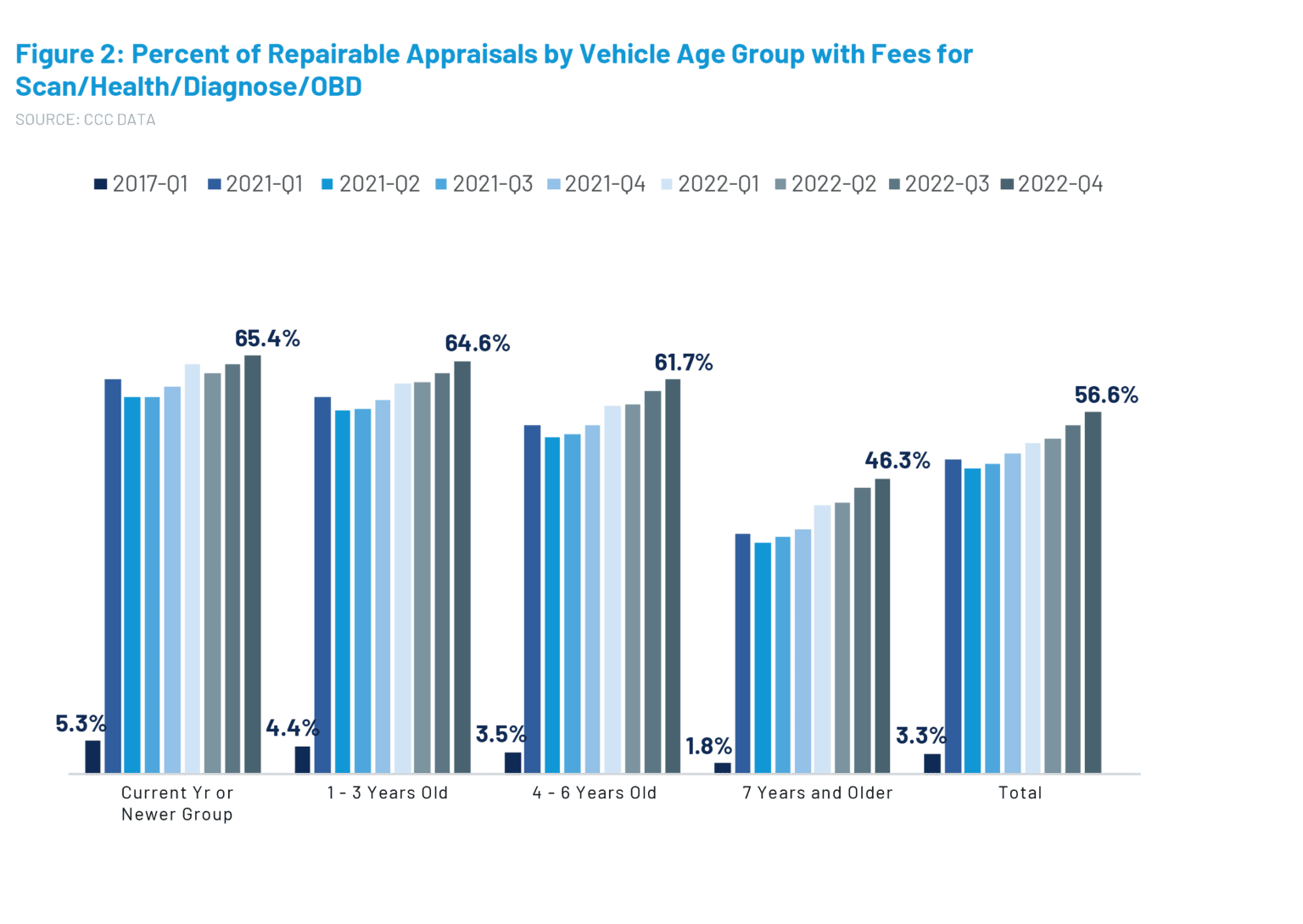
Auto manufacturers either recommend or require that scans be completed pre-repair and following the completion of repairs. OEM-certified repair shops are required to perform scans with the OEM’s software, and many Multi-Shop Operators (MSOs) have a standard policy requiring pre- and post-repair scans, which means repairable vehicles should receive at least two scans per VIN number. This might explain why you’re more likely to see scans included in the first estimate rather than in subsequent supplements. (Figure 3)
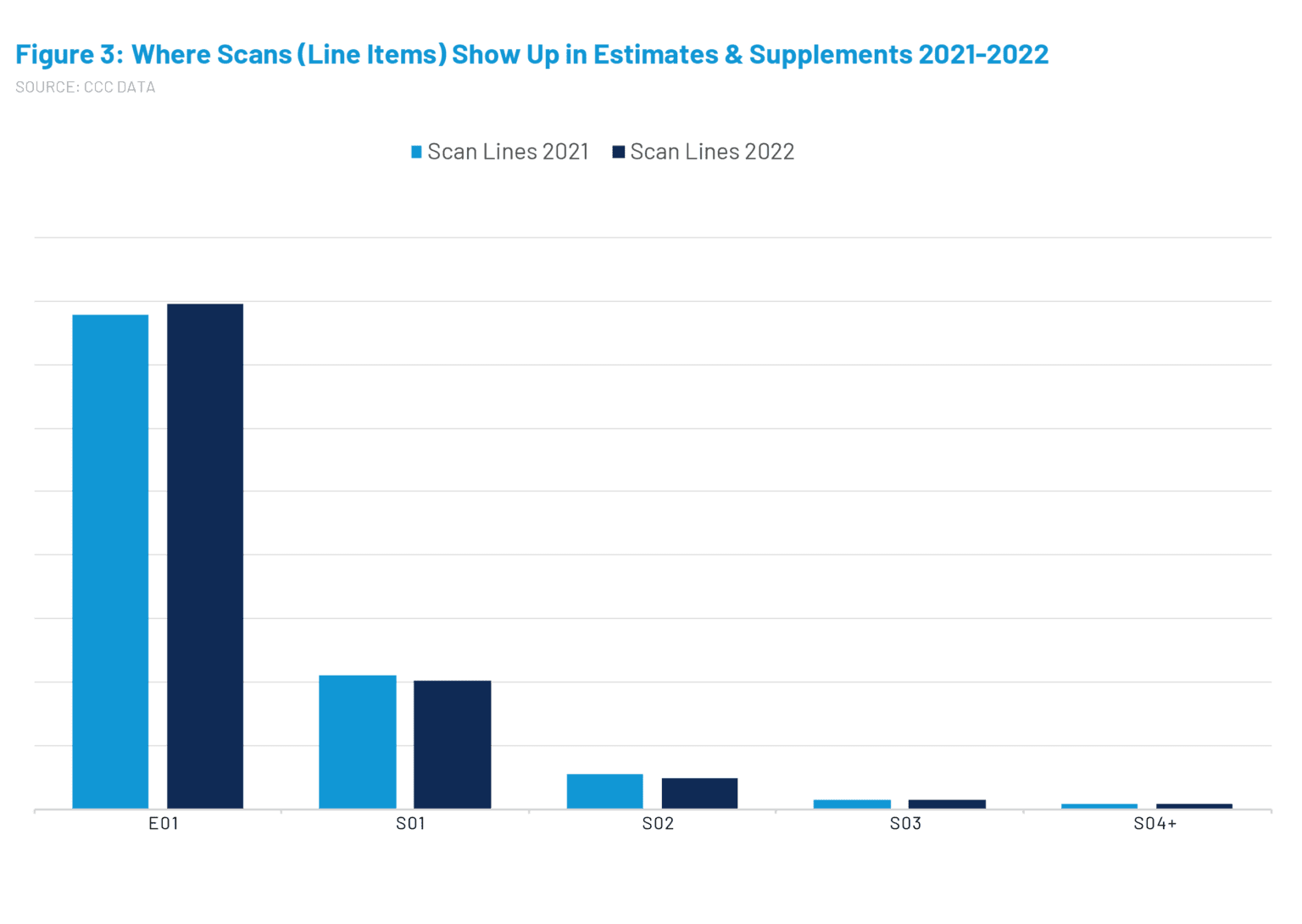
In-process scans are an emerging trend and considered best practices among many of the industry’s top operators. In-process scans enable repair facilities to monitor the clearance, or even addition, of Diagnostic Trouble Codes (DTC) throughout the repair process, which can alleviate the need to backtrack and troubleshoot issues following the completion of repairs, not to mention ensuring thorough repairs and valuable repair cycle times, as well as other related costs.
CCC’s estimating data indicates that while an increased number of scans are included in the initial estimate, the subsequent scan to validate that error codes have been cleared or that additional trouble codes were initiated is largely absent from supplements.
See also: Auto Claims and Collision Repair: The Great Reset
Absence of a diagnostic scan charge doesn’t always mean that the vehicle wasn’t scanned. Based on anecdotal field evidence, an unknown percentage of vehicles were, in fact, scanned, yet the scan procedure was left off the estimate. This appears to be an opportunity for collision repair shops to not only highlight the thoroughness of their evaluation and work but also instill added confidence in consumers that their vehicle is safe to drive.
Absence of a corresponding scan and its documentation could be the types of red flags that supporting software will be able to identify in the future, thus reducing risks or omissions by shops.
Diagnostic scans are complemented by system calibrations, such as x/y-axis settings on cameras, horizontal/vertical specifications with radar and other procedures as documented by the manufacturer. Vehicle calibrations do not come without operational changes for repairers. Vehicle manufacturers have specific protocols that must be followed for systems to be calibrated to factory standards. These include:
- The space or environment where the calibration occurs
- Vehicle setup (including such details as a full tank of gas, specified tire pressure and an empty trunk)
- Camera aiming targets and stands (Figure 4)
- Specialized scan/calibration tools and
- The technical acumen needed to perform the calibration
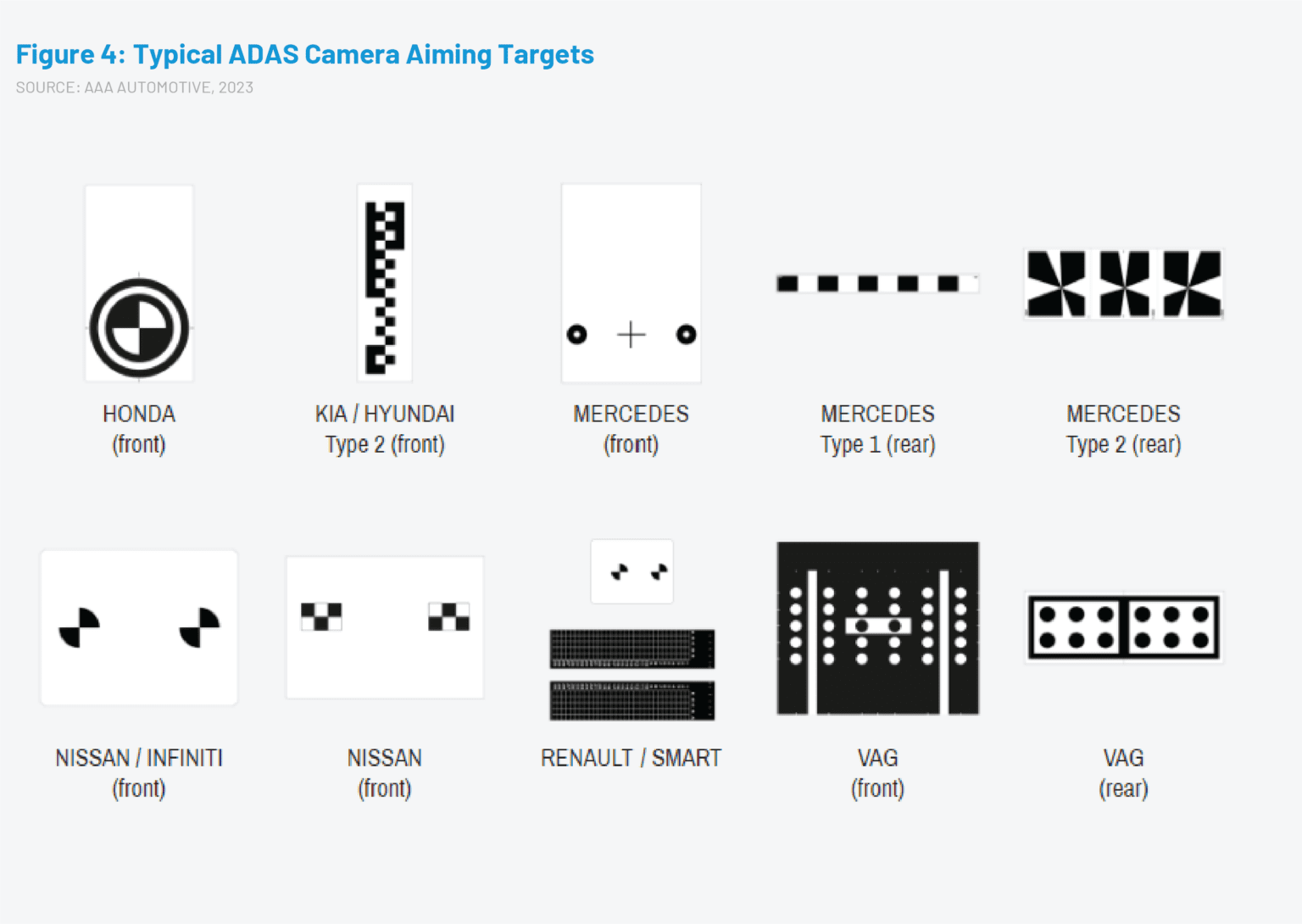
Calibrations Catch Up
Today, repair shops without calibration capabilities must rely on outsourcing that work to local dealerships or competing repair shops or vendors. This practice adds to total cost, turn-around time and potentially diminished customer satisfaction, not to mention the added complexity in documenting work completed. It is apparent that scanning and calibrating vehicles is a major component in the continued evolution of repair shops and expansion of vehicle servicing capabilities.
The frequency of calibration procedures has not yet reached the level of scans but is steadily increasing. As of mid-year 2022, only 24% of current (or newer) and 19% of vehicles one to three years old had a calibration charge on the estimate. That number is sure to climb as ADAS feature become commonplace in the vehicle pool. (Figure 5)
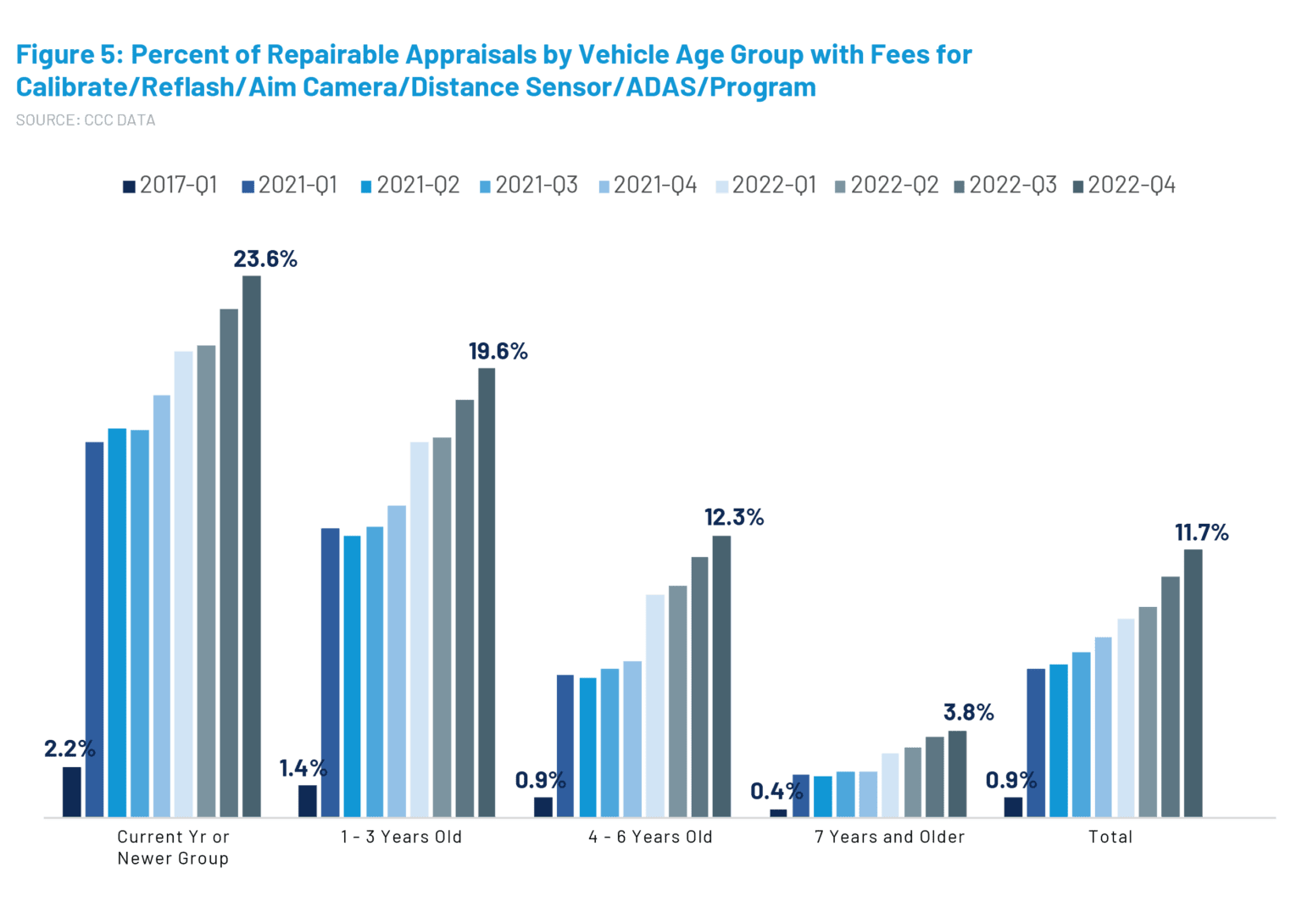
Completing the proper diagnostics, determining which components might require calibration and reviewing the OEM repair procedures can help a repairer incorporate the calibration into the repair plan up front. These steps could help to avoid added costs and repair time identified later in supplemental phases of the repair process.
See also: Transforming Auto Claims Appraisals
Based on CCC estimate and supplement data, calibration line items are most likely to appear in the initial estimate or the first supplement. However, unlike scans, calibrations are showing up on a more frequent basis in supplements. (Figure 6)
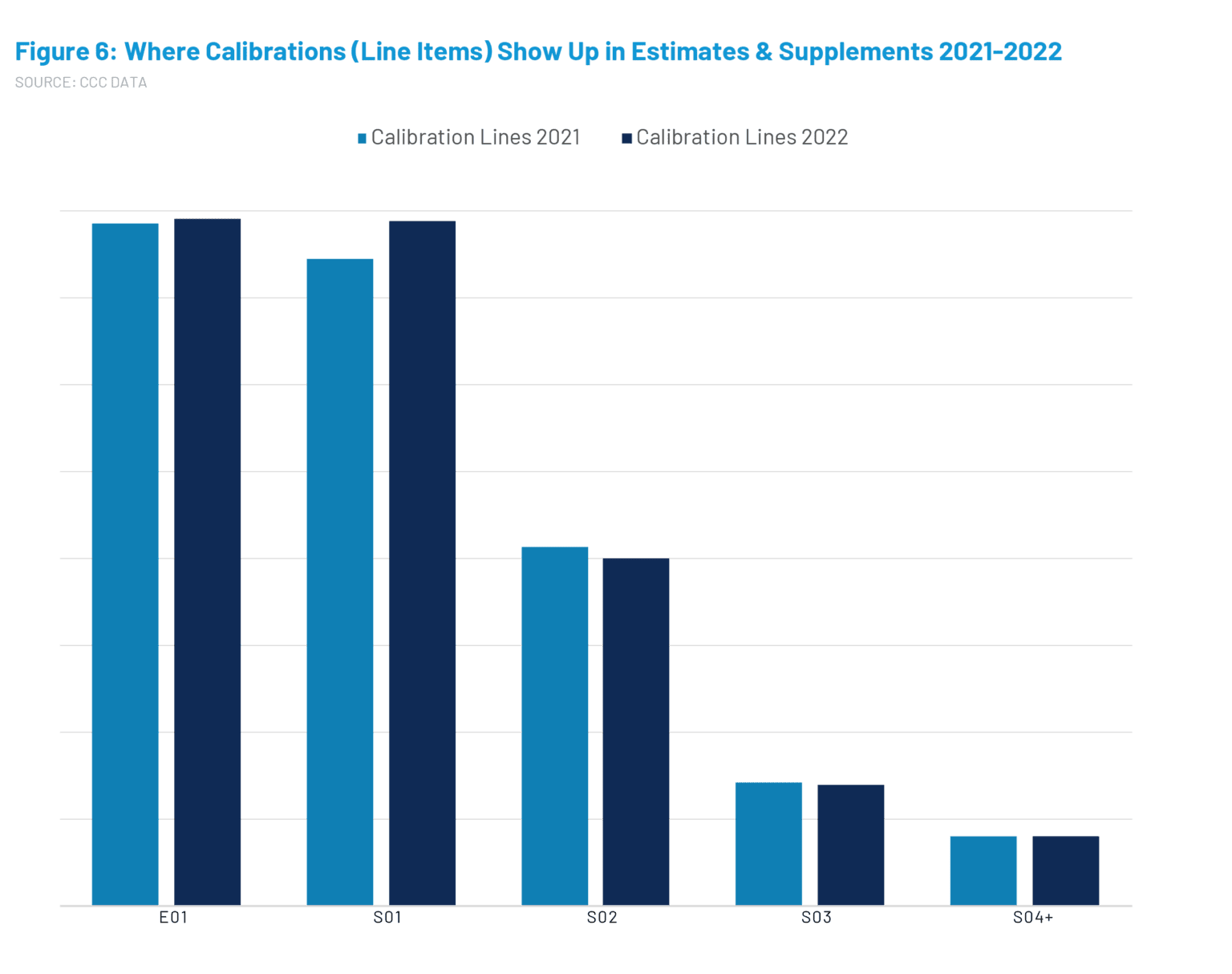
The Future of Collision Repair
In the last five years, calibrations have moved from the exception to almost the rule. Technology exists to ensure necessary calibrations are completed 100% of the time and are recorded for all relevant parties, including the end-customer, as a means to instill confidence that a repair was completed.
The wave we are witnessing with scanning is now seeing initial liftoff with calibrations. A more systematic look at the best way for each facility to execute and manage calibrations is needed to improve the customer experience particularly with regard to quality and cycle time. Once again, adjustments in technology and process to ensure this transition happens efficiently are needed.


